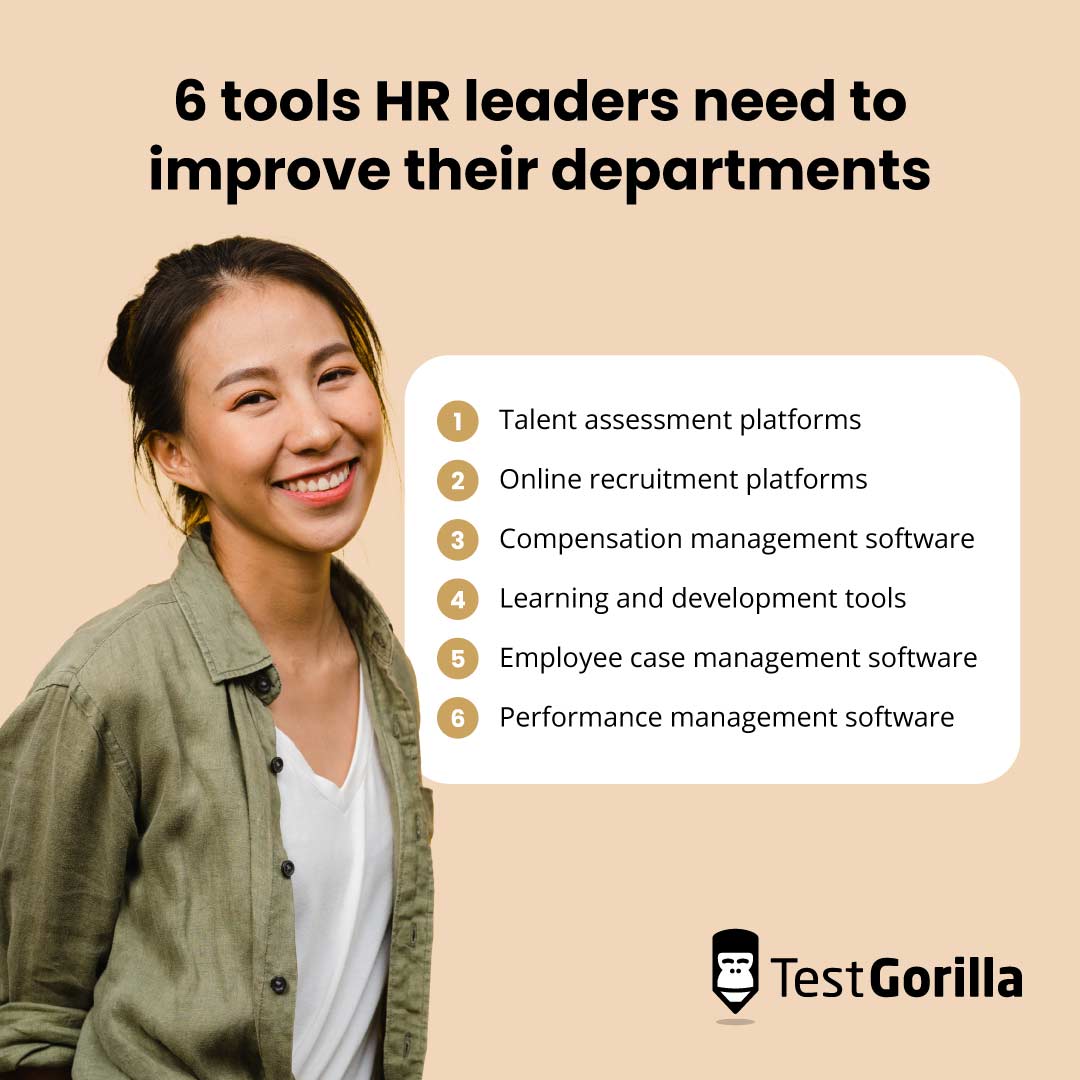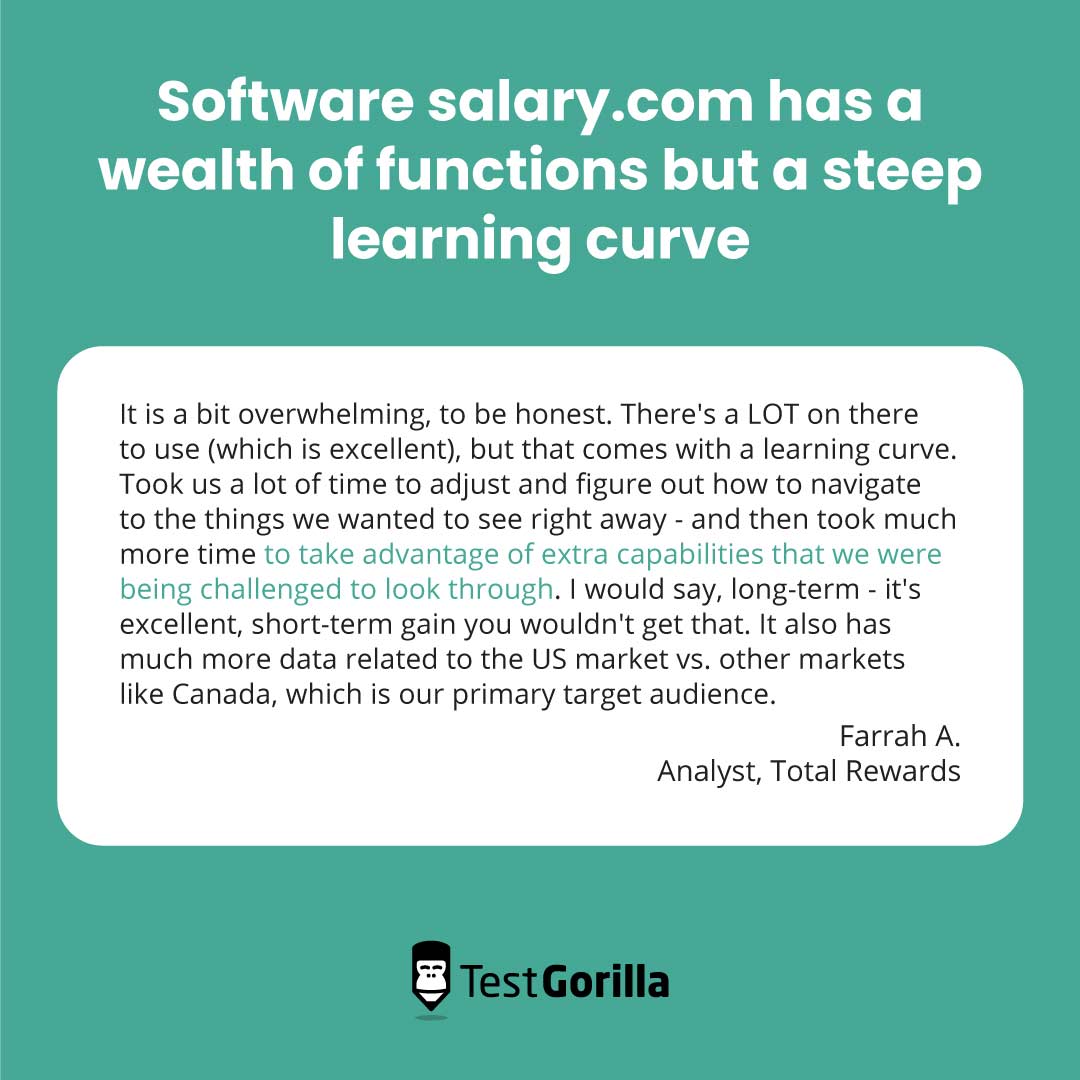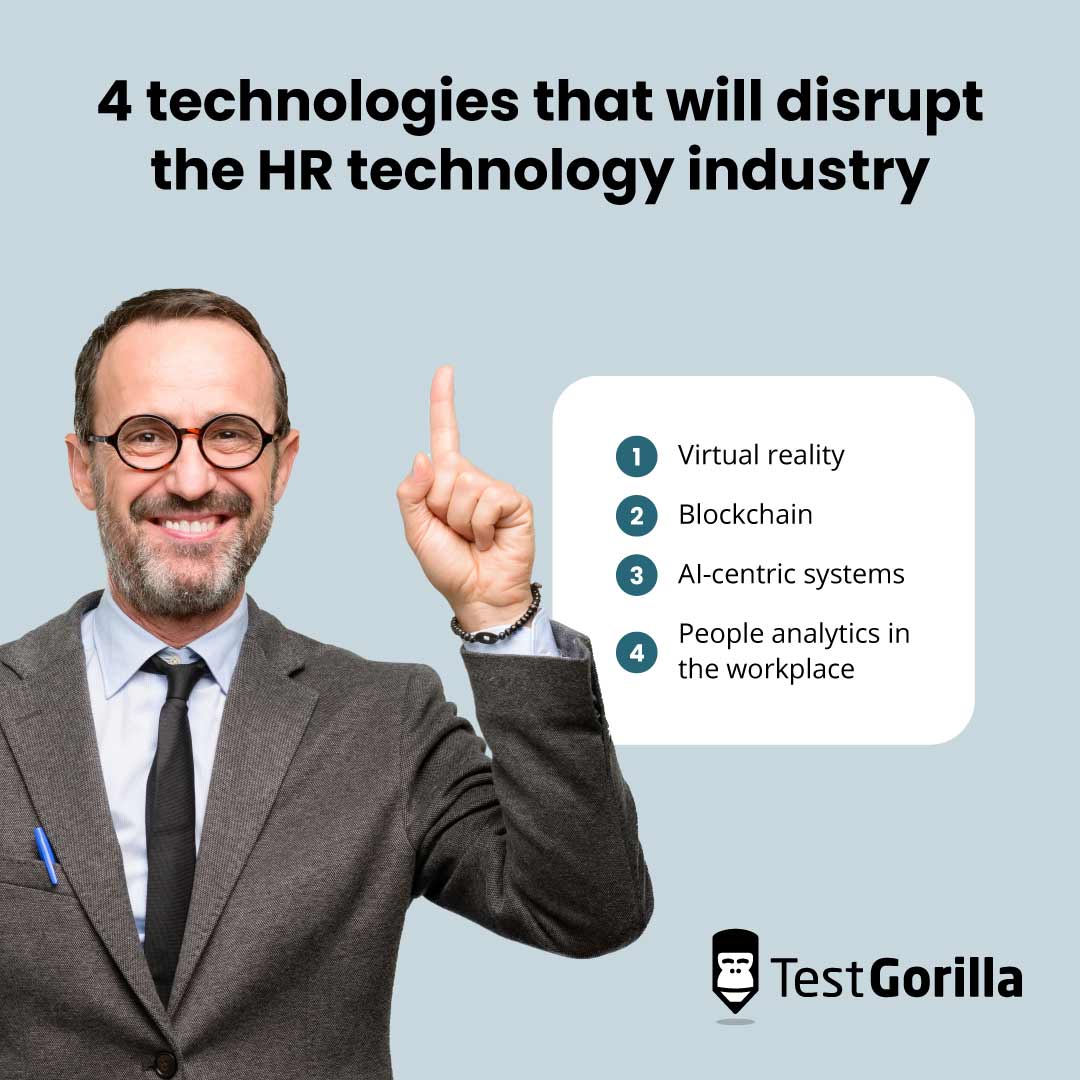HR technology isn’t as new as you might think.
Telephones, fax machines, and courier services were all considered revolutionary tools for HR departments long before the first HR tech stack was put together.
But HR technology is only as good as its ability to improve employee engagement, performance, and organizational culture.
What tools do HR leaders actually need to keep up with an ever-expanding digital landscape and a workforce that demands flexible, coherent, and comprehensive HR services?
What tools are just over the horizon that may disrupt the HR processes you have only recently put in place with the help of integrated and all-in-one HR tech platforms?
This article walks you through a brief history of HR tech stacks, six effective HR technology systems that every business can benefit from, and the future of HR technology.
Table of contents
The journey of HR tech stacks
The modern era of HR technology was born in the 1990s.
Although fax machines were a welcome upgrade from the manual transfer of HR documents, the advent of online job boards and virtual recruitment was nothing short of revolutionary.
HR recruiters could now process hundreds of resumes in a fraction of the time and cater their hiring process to candidates with the right skills and experience.
That’s when talent management became a main priority.
HR departments no longer had to keep track of each candidate's profile manually. They could transfer recruitment data to early applicant tracking systems (ATS) that could be accessed outside of the office.
But with HR technology becoming more widespread, so did the competition.
Organizations competing for the best and brightest had to shift their focus to employee experience to win them over.
With the current rate of engaged workers at only 20%, employee experience should remain a priority for large and small businesses alike.
The waterfall of HR technology continues to flow today, which is why it has no singular definition.
A helpful way to visualize an HR technology stack is a collection of AI, apps, and other smart tools to augment, optimize, and automate HR processes.
As with most technological innovations, HR tech has followed culture changes within and outside of the workplace.
The rise of hybrid and remote work offerings, for example, has influenced how HR tech solutions handle cases, track employee progress and productivity, and support the needs of each individual employee.
Even the culture around artificial intelligence is slowly shifting away from the image of AI as a job killer to the more positive view of AI as a complementary tool for existing and evolving workforces.
But just because this collection of HR tech stacks has grown doesn’t mean that every tool is guaranteed to work for your business.
Let’s take a look at the tools HR leaders need to empower their HR teams.
6 tools HR leaders need to improve their departments
HR is more than just the recruitment arm of your organization.
Your HR tools should also assist with other important responsibilities like compensation and benefits, learning and development, employee relations, and performance management.
Before discussing the six types of tools you should use in your department, we need to explain that HR tools can be integrations or all-in-one platforms:
Integrations | All-in-one platforms |
A tool that connects your HR applications with other business management software | A general HR platform with a Human Resource Information System (HRIS) or Human Resource Management System (HRMS) |
Create a task in one app that triggers a workflow in another, like signing a document in DocuSign which triggers an alert in Slack, for example | Complete all HR-related tasks, like hiring, onboarding, performance management, training, and payroll on one platform |
Specialist tools with unique areas of focus are connected to complete different tasks | One interface with a core focus, and add-ons come as the platform scales |
Integrations
Integrations aim to keep all of your information linked together without having to navigate across tools.
Deel, for example, enables you to connect with your favorite HR platforms, like Intuit Quickbooks or NetSuite, to reduce manual tasks and streamline workflows.
Insperity’s integration portal gives you in-depth access to legacy systems so you can integrate easily instead of having to update the functions of your existing system.
All-in-one platforms
If you’re new to HR technology, all-in-one tools like Gusto offer full-service payroll tools, time tracking, benefits management, compliance and legal modules, and hiring and onboarding in a single package.
Rippling is a great tool for remote employees or flexible working.
It offers remote laptop management, instant local tax registration, employee management, payroll, and employee benefits. It’s also scalable because it can upgrade or downgrade depending on the size of your business.
The Land Institute, an independent non-profit agricultural research organization, is one example of a business implementing an all-in-one HR platform.
Krista Roberts, the Land Institute’s HR manager, acknowledged that a lot of their processes were once outdated and paper-driven. They were struggling with their onboarding, payroll, and tax compliance.[1]
When they switched to all-in-one, each process was streamlined, with a friendlier and more efficient onboarding process.
Decide which HR tech strategy is right for your business. All-in-one platforms are great if you don’t have an HR stack that you want to add to, giving you a single tool for all your needs.
1. Talent assessment platforms
Skills assessments are crucial to HR processes within and outside of the hiring process.
Incorporating a talent assessment platform into your HR tech stack benefits your hiring process in a number of ways:
Talent assessment platform benefits | How they work |
Expand your talent pool | Talent assessment platforms welcome any skilled candidate into the hiring process without education or degree requirements |
Shorten time-to-hire | Nearly 92% of businesses using skills-based talent assessment platforms reduced their total time-to-hire as scalable skills tests replace clunky manual platforms |
Reduce bias | Eliminating degree and experience requirements to assess skills has proven to reduce bias in hiring |
Predict job success | Implement and monitor skills-based hiring practices like structured interviews and multi-measure testing to accurately predict job success[2] |
Lower hiring costs | Talent assessment platforms cut direct costs, like resume screening and recruiter fees, and indirect costs, like candidate ghosting and drains on productivity |
Traditional hiring platforms often include outdated resume screening tools that look for keywords instead of gathering in-depth data about a candidate’s skills through assessments.
Talent assessment platforms give your HR team a Swiss army knife of assessment tools to pinpoint skills gaps and evaluate candidate skills, motivations, and competencies.
A robust talent assessment platform will also serve your existing employees by managing their skills development.
Talent assessment platforms are great upskilling and reskilling tools to measure candidates’ current skills to see where they can improve. In other words, they are a key part of making successful employee development plans.
TestGorilla’s test library is full of role-specific, situational, technical, and soft skills tests that your HR team can cater to your unique recruitment goals and existing employee development plans.
2. Online recruitment platforms
Online recruitment platforms help HR manage the hiring process by creating job ads, searching for job applicants, screening candidates, or tracking applications and interview phases.
The number of online recruitment platforms available can be overwhelming, but these tools are a great place to get started:
1. Applicant tracking systems (ATS)
ATS tools empower you to consolidate your recruitment processes by offering a branded recruitment portal, pre-screening questions and skills tests, integrated interview suites, and detailed analytics features to monitor candidate performance.
2. Candidate relationship management systems (CRM)
Candidate relationship management tools help businesses manage relevant information from individual job applicants.
With CRMs, you can track and pull contact information, previous communications, and interviewer information to determine the best way to move forward.
3. Pre-employment screening software
Pre-employment screening software offers an objective, standardized method of assessing candidates’ hard and soft skills, personality types, and situational judgment.
You can have candidates take our Reading comprehension test, for example, or a more role-specific test, like the Android Development test, to assess practical programming skills.
4. Talent-sourcing platforms
Talent-sourcing platforms create a more consistent experience for candidates and between hiring managers by offering job description and job posting support, candidate sourcing and filtering, and interview management.
Monster’s Talentbin, for example, is a candidate database with more than a million profiles that specializes in passive candidates with social media recruiting and Boolean searches.
5. Onboarding software
This software provides a centralized system to monitor onboarding and acts as a knowledge base for training and task management.
Paycor, for example, was ranked the best onboarding software of 2023 for its early employee engagement and tax credit integration.
6. Employee referral platforms
These platforms easily manage and organize the referral process to incentivize employees to refer candidates.
7. Video interview platforms
Having a centralized video interview platform lets businesses schedule and conduct remote interviews with pre-established questions.
You can implement some or all of these platforms to save time, money, and resources throughout your hiring process.
3. Compensation management software
Compensation and benefits management is the process of structuring, examining, and distributing employee benefits like monetary salary and earnings, health insurance, remote work options, paid parental leave, or employee incentives.
Proper compensation management helps your HR team:
Build budgets
Determine competitive wages and job offers
Manage compensation policies around pay, bonuses, and benefits
Maintain equitable pay standards and comply with pay equity laws
Measure and track diversity within the organization
Adjust pay rates for employees in different regions with different costs of living
That’s a lot to keep track of.
Compensation management software centralizes all of these tasks and automates time-consuming ones to help HR execute its broader talent management strategy.
Salary.com, for example, is the leading provider of compensation market data, software, and analytics.
It’s the fastest-growing compensation management company that services more than 30,000 survey participant organizations and more than 45 million employees globally.
Although many users are impressed with the wealth of functions it offers, it has a steep learning curve for a short-term solution. One user writes:
As with all HR technology, consider which tools and platforms can address your unique organizational needs.
4. Learning and development tools
Recruiting skilled employees and making sure they get paid on time are key HR responsibilities. But your HR teams also need to keep your employees engaged and excited about their future at your organization.
This is where learning and development come in.
Nearly 100% of employees say they would stay with a company if it offered learning and development opportunities.[3]
Learning and development is a systematic approach to improving the knowledge, skills, and attitude of your employees, which boosts job satisfaction and performance.
There are plenty of tools at your disposal:
Online learning platforms
These systems are great tools to upskill or reskill employees.
Coursera, for example, is a leader in online learning and development with more than 500 courses, certificates, and degree programs.
Online learning platforms give job seekers and existing employees the opportunity to absorb information and build skills for a variety of different industries and roles.
Online training platforms
Online training platforms offer a similar opportunity, but are mainly focused on instructing the trainees on role-specific tasks and responsibilities.
Alison, for example, is an on-demand training platform that offers small businesses the tools to educate and train employees with flexible monthly plans. This platform lets employers create custom learning paths, track engagement, and manage enrollment.
Mobile apps
With mobile apps, employees can learn new skills at their own pace. Breaking information into smaller portions makes learning more convenient and accessible to your workforce, wherever they’re located.
Gamification
Gamification uses gaming platforms to build collaboration, problem-solving skills, and make learning more fun for your employees.
In fact, research shows that gamification makes 90% of hires more productive.[4]
5. Employee case management software
Every employee has a unique set of circumstances with specific questions and concerns that might need to be addressed. For instance, employees may be expectant parents, shifting to a hybrid work model, or have questions about PTO.
With only 27% of employees feeling that their wellbeing is supported by their organization, managing employee cases efficiently and respectfully is crucial to building a positive and productive workplace culture.
HR case management systems are an upgrade from traditional intranets because they reduce the number of calls, e-mails, and requests that can flood your HR teams.
An intranet is a private company network, such as a website that an airline company uses exclusively to deliver updates and information to its employees.
Intranets have some advantages, like easy storage of files and company data, and they manage communication between employees.
However, the tools they use are often outdated, and information can be difficult to find.
HR case management systems like Newgen create, manage, and share relevant content and company data with all case stakeholders.
Information is easy to store, locate, and can be accessed remotely by your employees. With intranets, your employees can typically only access data on company servers.
HR case management systems handle the basic employee requests and inquiries with self-service tools and chatbots so you can focus on the big-picture issues that are important to your workforce.
6. Performance management software
Performance management is the ongoing dedication to improving employee performance and engagement to boost productivity and organizational success.
Performance management is an integral part of your organization’s strategic planning, compensation model, and HR tech stack.
Performance management software helps you:
Define organizational goals
Objectively measure success
Reduce bias
Identify HR goals
Make better job descriptions
Performance management systems streamline your process with tracking tools for employee progress and development, like:
Reviewing employee performance
Documenting discussion topics
Establishing and tracking employee goals
Facilitating 360 degree feedback
Managing organizational planning
Performance management software helps managers and employees collaborate on developmental goals to ensure a positive employee experience.
An added benefit, these tools often integrate with the compensation management solutions in your HR tech stack.
Lattice, for example, combines ongoing performance management, employee engagement, goal-setting, career development, compensation management, and people analytics in a single platform.
4 technologies that will disrupt the HR technology industry
The journey of HR tech stacks and all-in-one platforms is not going to end anytime soon.
In fact, there are already emerging technologies that, if adopted, might disrupt the HR technology landscape.
Innovations like virtual reality, AI, and people analytics may complement existing HR tech stacks or make them obsolete. There’s also a chance that they’ll fall short of the hype.
1. Virtual reality
As of now, virtual reality is in its early stages, but not for long…
Tech giants, such as Meta and Google, have already experimented with unique virtual realities in the workplace like:
Private virtual offices
Virtual work bubbles
The infinite office
According to Matt Stevens, managing partner at Deloitte, virtual reality (VR) and augmented reality (AR) are still new enough to be considered attractive to job candidates.
In fact, Deloitte estimates that VR is on track to influence 25% of organizational meetings by 2024 and 70% of employee training.
This is potentially a huge disruptor for the more traditional HR tech platforms that we explored earlier.
If training courses, for example, are successful in a VR environment, then existing online learning and training platforms may not be as enticing or effective for certain segments of the workforce.
But is VR worth the hype?
Facebook and Meta founder, Mark Zuckerberg, has already had to pivot from his creation, the Metaverse, where these virtual HR milestones were supposed to occur.[5]
Although Meta’s VR is not the world-changer that was promised, VR remains a powerful training and simulation tool used in fields like gaming, healthcare, and architecture.
2. Blockchain
A blockchain is a heavily secured, decentralized form of digital storage that is very difficult to decrypt or reproduce.
Blockchains can play a vital role in HR processes like recruitment by managing:
Application and credential verification
Fact-checking employment or education history
Candidate data storage and security
But the possibilities don’t end there. According to Gartner, blockchain will create $3.1tn in business value by 2030.
By that time, businesses may already be hiring blockchain developers to handle.
Existing employee data security and access
Blockchains gather and store data in groups, or “blocks,” with a certain capacity. When a block is full, it’s chained to another full block.
The way that these blocks are chained together makes tampering with information nearly impossible.
For example, organizations that work with sensitive financial, personal, or medical information can use blockchains to protect their interests as well as the privacy of their employees.
Compliance and regulations
Companies have a variety of compliance obligations, depending on the industries they operate within and the regulatory bodies that they report to.
Health organizations, for example, have to comply with HIPAA regulations to maintain privacy around health records, claims, and social security numbers.
As custodians of that information, employers and their HR teams are legally required to keep it safe. Blockchains can ensure that they meet their compliance obligations by guaranteeing effective security within the confines of rules and regulations.
Compliance can also refer to HR’s duty to provide safe channels for transactions between your organization and your employees, like benefits, payment, and smart contracts.
Blockchain may prove to be a vital tool in facilitating internal and external compliance practices in the years to come.
3. AI-centric systems
Global investment in AI increased by 27% in 2023. That’s with a $92bn increase in research and development.[6]
AI systems can assist HR processes by providing more accessible data around:
Skills development
Workplace culture
Diversity initiatives
Payment processes
Internal mobility
Productivity
Job design
Consider AI platforms like ChatGPT.
These value-enabling technologies have the potential to satisfy user needs and assist with HR and recruiting, like helping you generate role-specific interview questions or crafting compelling job listings.
It’s not difficult to imagine a world in which AI can completely manage an organization’s HR processes, from hiring and training to case management.
But there are growing concerns about AI’s potential to introduce more bias into the hiring process.
In fact, in 2018, Amazon had to scrap its new AI recruiting tool because it was discriminating against female candidates.[7]
According to Hayfa Mohdzaini, from the Chartered Institute of Personnel and Development, AI’s ability to track candidates’ body language, vocal patterns, and facial features is still in its early stages, which poses risks and opportunities when it comes to bias in hiring.
4. People analytics in the workplace
People or talent analytics is a data-backed strategy for improving people-related decisions to advance organizational and individual goals.
It covers a wide range of carefully collected data starting from the very beginning of the hiring process when information is first collected, through the employee life cycle. This includes salaries, roles, projects, performance reviews, engagement surveys, and professional development.
Although people analytics has existed for nearly a decade, its early stages focused on tracking basic metrics of salary, time off, and tenure.
Now, people analytics has expanded to tracking data related to employee wellbeing, like burnout, mindset, and workplace culture.
Research from Harvard Business Review shows that more than 80% of HR respondents said they needed more talent-related insights to make business decisions.[8]
HR tech stacks offer valuable tools to locate talent and streamline your hiring process, but they don’t explicitly produce and implement those talent-related insights.
Instead, businesses often have to rely on the intuitions and opinions of their HR teams when making management and hiring decisions.
HR tech stacks can put those teams in better positions to succeed, but people analytics has the potential to disrupt the HR technology sector by offering targeted insights at the very beginning of the employee life cycle.
With that in mind, the field of people analytics has come under scrutiny during the pandemic-era global economy, in which companies are cutting back on tools and initiatives that do not produce concrete, explicit value.
People analytics is more of a behind-the-scenes decision-making tool that has yet to prove it can replace an ever-expanding HR technology industry.
Get on board with HR technology sooner rather than later
The journey of HR tech stacks is only getting longer and more complex.
Organizations need to equip their HR teams with digital tools like skills assessments, online recruitment platforms, learning and development platforms, and performance management systems to meet the evolving demands of employees and compete with industry peers.
Although there’s a seemingly endless number of HR tech stacks and platforms at your disposal, choosing the wrong system for your organization could be worse than doing nothing at all.
Not to mention that emerging technologies are knocking on the HR tech industry’s door, ready to disrupt recruitment and performance management.
Regardless of the platform you choose, remember to focus on the people that these platforms will impact: your HR managers, employees, and customer base.
Learn more about how to put people first at every level of your HR infrastructure, and check out TestGorilla’s talent assessment platform to explore how you can hire better and without bias.
Sources
“The Land Institute replaces paper-driven processes with an all-in-one HRIS, saving time, money, and frustration”. (March 30, 2023). SentricHR. Retrieved June 22, 2023. https://sentrichr.com/case-study/the-land-institute/
Schmidt, Frank; Oh, In-Sue; Shaffer, Jonathan. (October 2016). “The Validity and Utility of Selection Methods in Personnel Psychology: Practical and Theoretical Implications of 100 Years of Research Findings”. Working Paper. Retrieved June 22, 2023. https://home.ubalt.edu/tmitch/645/session%204/Schmidt%20&%20Oh%20validity%20and%20util%20100%20yrs%20of%20research%20Wk%20PPR%202016.pdf
“2023 Workplace Learning Report: Building the Agile Future”. (2023). Linkedin. Retrieved June 22, 2023. https://learning.linkedin.com/content/dam/me/learning/en-us/pdfs/workplace-learning-report/LinkedIn-Learning_Workplace-Learning-Report-2023-EN.pdf
Thakkar, Rinku. (July 15, 2022). “Top 100 Hiring Statistics for 2022”. Linkedin. Retrieved June 22, 2023. https://www.linkedin.com/pulse/top-100-hiring-statistics-2022-rinku-thakkar/
Naughton, John. (May 13, 2023). “A moment’s silence, please, for the death of Mark Zuckerberg’s metaverse”. The Guardian. Retrieved June 22, 2023. https://www.theguardian.com/technology/commentisfree/2023/may/13/death-of-mark-zuckerberg-metaverse-meta-facebook-virtual-reality-ai
Maslej, Nestor, et al. (April 2023). “The AI Index Report: Measuring Trends in Artificial Intelligence”. Stanford Institute for Human-Centered Artificial Intelligence. Retrieved June 22, 2023. https://aiindex.stanford.edu/report/
“Amazon scrapped ‘sexist AI’ tool”. (October 10, 2018). BBC News. Retrieved June 22, 2023. https://www.bbc.com/news/technology-45809919
“HR Joins the Analytics Revolution”. (2014). Harvard Business Review. Retrieved June 22, 2023. https://hbr.org/resources/pdfs/comm/visier/18765_HBR_Visier_Report_July2014.pdf
Related posts
Hire the best candidates with TestGorilla
Create pre-employment assessments in minutes to screen candidates, save time, and hire the best talent.
Latest posts
The best advice in pre-employment testing, in your inbox.
No spam. Unsubscribe at any time.

Hire the best. No bias. No stress.
Our screening tests identify the best candidates and make your hiring decisions faster, easier, and bias-free.
Free resources
This checklist covers key features you should look for when choosing a skills testing platform
This resource will help you develop an onboarding checklist for new hires.
How to assess your candidates' attention to detail.
Learn how to get human resources certified through HRCI or SHRM.
Learn how you can improve the level of talent at your company.
Learn how CapitalT reduced hiring bias with online skills assessments.
Learn how to make the resume process more efficient and more effective.
Improve your hiring strategy with these 7 critical recruitment metrics.
Learn how Sukhi decreased time spent reviewing resumes by 83%!
Hire more efficiently with these hacks that 99% of recruiters aren't using.
Make a business case for diversity and inclusion initiatives with this data.




















